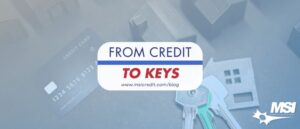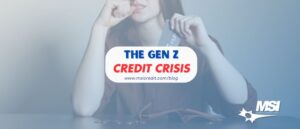So you now have a revolving line of credit. You may be asking yourself, “So now how do I use this to help me?” Usage of revolving lines of credit (or any credit line) can be simply understood by following the structure of how scores are calculated. Each area will cover the important factors that are considered when calculating a score.
Payment history is the biggest factor on your credit report as it considers 35% of your credit score. Here it will take into account your payment track record. Is your track record good with all on time payments, or less than perfect with late payments of 30 days or more? Here you want to assure you do not miss your monthly payment. At the very least, if things ever get financially tight, assure yourself to make a minimum monthly payment.
Amounts owed will consider 30% of your credit score. Here it will evaluate how much you owe on each credit line and if it is too much. With credit cards it is very important to understand the higher risk factor of amounts owed versus an installment line of credit. If you have a $300 limit and are at a $295 balance you may be seen as a risk as you are maximizing your available credit. This can potentially communicate that you may have financial issues. It is important to consider that even if you don’t have any financial issues, income is not visible on your credit reports. It is best to use your credit card for small purchases that have a manageable balance and can be paid to zero at the end of each billing cycle.
Length of credit history will consider 15% of your score. Here it will look into how established your lines are. Like antiques and fine wine, the older is better here. As you show more established lines it essentially shows financial responsibility. Here is where revolving lines help a bit more compared to installments, as they can be opened for a number of years. Your installment on the other hand will eventually have an end date.
New credit considers 10% of your score. Here it will evaluate if you are taking in more debt. This is where inquiries come into consideration. It is important to keep in mind that too many inquiries can cause a decrease to your scores. Apply for lines of credit only when needed. So as the holiday season nears, avoid opening unnecessary lines just to save 5% on your purchase. Types of creditin use will consider another 10% and is the last factor considered. This will look into the mixture of credit you have established. Is it all credit cards, or is it healthy with installment accounts as well such as auto loans and home loans? The perfect mix that has been recommended is three revolving accounts to one installment.
The factor of types of credit completes and continues the circle of how scores are calculated. The perfect mixture is something you have to build up to. Don’t go and apply for three credit cards and a car loan right before you plan to apply for a home loan. This would affect your amounts owed with showing too much debt recently acquired, and additionally would add-on multiple inquiries. In the end it simply comes down to being a responsible borrower. Proper usage of your revolving lines of credit can be the stepping stone to being able to acquire further lines of credit to complete that perfect mixture of credit. Have any questions or need guidance? Feel free to contact us or share your questions in the comments below.
 MSI Credit Solutions provides superior credit restoration and comprehensive consulting services that are reliable and affordable. For any questions or to schedule a free credit consultation, contact us at (866) 217-9841.
MSI Credit Solutions provides superior credit restoration and comprehensive consulting services that are reliable and affordable. For any questions or to schedule a free credit consultation, contact us at (866) 217-9841.
*The information in this article has been provided strictly for educational purposes.





